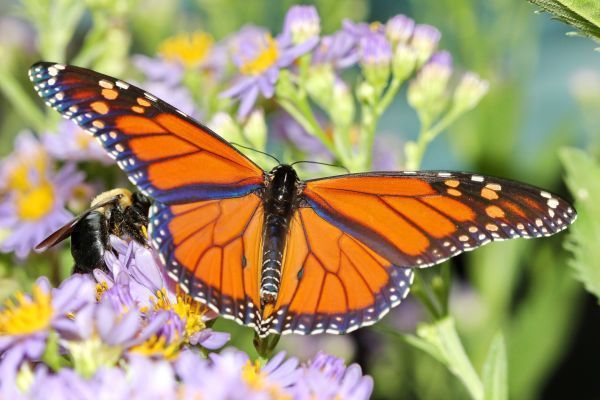IL Ag Coalition Submits Statewide Monarch Conservation Efforts

One year after the Illinois Monarch Project Agriculture Action Plan was unveiled on Earth Day, Illinois agriculture groups continue to highlight voluntary conservation efforts geared toward pollinators.
These groups recently submitted data to the Illinois Monarch Project for the United States Fish and Wildlife Service’s (USFWS) Monarch Conservation Database. The data submission is a collection of metrics showcasing Illinois stakeholder efforts to help protect pollinators over the past six years.
The database aims to collect information on monarch habitat throughout the U.S. based on conservation efforts, which are defined as on-the-ground actions designed to improve the population status of monarchs.
That information, along with population surveys, will be reviewed by federal environmental agencies ahead of the USFWS Endangered Species Act listing decision regarding the monarch this winter. The most recent overwintering population of monarch butterflies in Mexico decreased 53 percent from the 2018-2019 population to the 2019-2020 population.
The report helps provide the federal government with information surrounding the monarch's habitat which will influence decisions going forwards in regards to the conservation of the species.
The Illinois Monarch Project (IMP) was established in 2016 with a mission to help monarch butterflies thrive throughout Illinois by collaborating on conservation activities and encouraging engagement by public and private landowners across diverse urban and rural landscapes. Members of the IMP work in four sector working groups including agriculture, urban, natural lands and rights of way. These groups are overseen by a technical steering committee made up of members from the groups. Illinois Farm Bureau leads the agriculture sector.
The uploaded information included a wide variety of efforts toward education and conservation of the monarch butterfly in Illinois. These efforts were submitted to the IMP from multiple stakeholders in the agriculture sector and highlights the impressive amount of effort that agriculture has put into monarch conservation.
Stakeholders who submitted efforts on behalf of the IMP Agriculture Sector include: Association of Illinois Soil and Water Conservation, GROWMARK/FS, Illinois Agriculture in the Classroom, Illinois Corn Growers Association, Illinois Farm Bureau, Illinois Pork Producers Association, Illinois Specialty Growers Association, Trees Forever, University of Illinois Extension and University of Illinois Extension Pesticide Safety Education Program.
Corn farmers can help preserve monarch habitat by adjusting mowing habits and leaving areas of milk weed, their primary habitat plant, alone while performing routine farm maintenence or designating areas of their farm as specific monarch habitat.
“Data submissions from ag coalitions across the country illustrate the broad range of work being done to protect monarch habitat within our industry,” said Liz Hobart, GROWMARK government relations manager. “We are all doing our part to help save this one species.”
Over 200 efforts were submitted to the USFWS Monarch Conservation Database, with efforts dating back to 2014. A snapshot of the data includes:
- Total pollinator-related outreach efforts – many of which focused on the monarch and milkweed – in the IMP Agriculture Sector:
- 271 articles, resource guides or posts on pollinators, monarchs and habitat, which were shared over a distribution (print) or reach (electronic) network of 2,421,150 contacts, resulting in 9,220,271 views, visits, impressions, clicks or engagements.
- Additionally, 138,832 in-person contacts through presentations or classroom curriculum were extended to the public throughout Illinois.
- The IFB Board of Directors has allocated over $110,000 toward research in the field of pollinator and monarch butterfly habitat in agriculture landscapes. IFB has also connected researchers to farmers for in-field research and outreach and extension.
- Over 850,000 acres have been enrolled in the Natural Resources Conservation Service’s (NRCS) Conservation Reserve Program (CRP).
- Over 100,000 CP-42 acres have been enrolled in the United States Department of Agriculture Pollinator Habitat Program.
- 741 additional acres of pollinator habitat have been created beyond CRP and CP-42 acres.
“Creating pollinator habitat is a priority for our organization,” said Trees Forever Program Manager and Field Coordinator Debbie Fluegel. “Every bit of habitat helps promote the health and wellness of species like the monarch butterfly and other pollinators that positively impact our environment.”
To learn more about the IMP in the agriculture sector, please visit www.ilfb.org/pollinators.











































































































